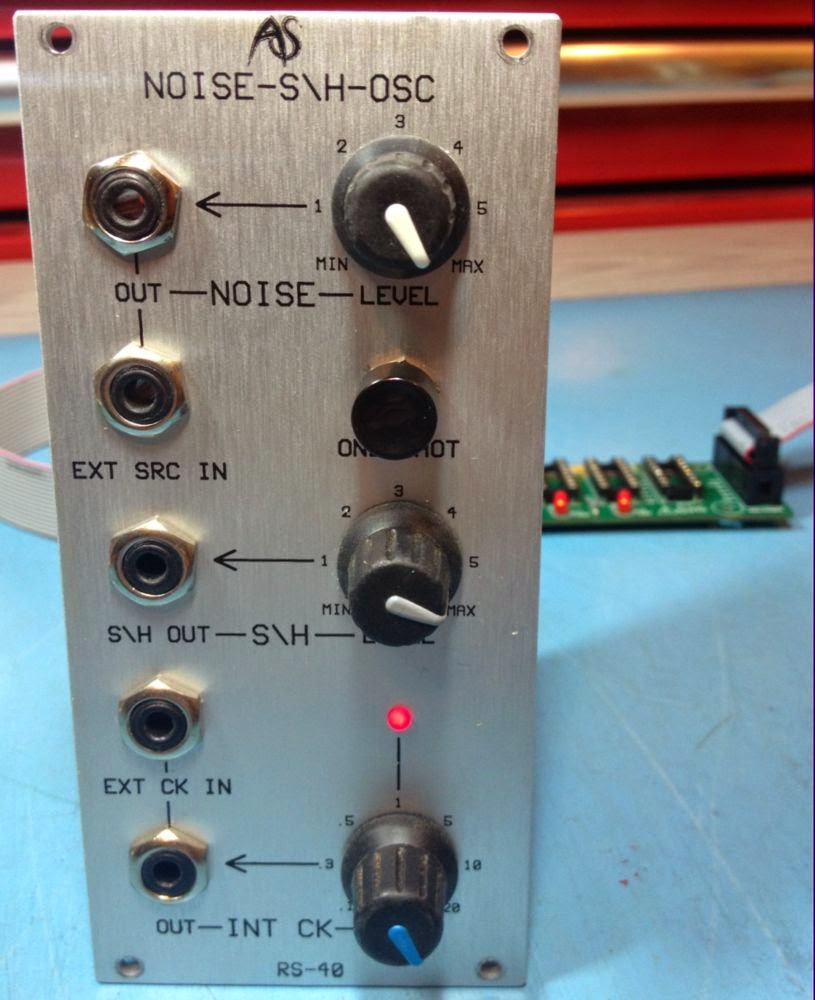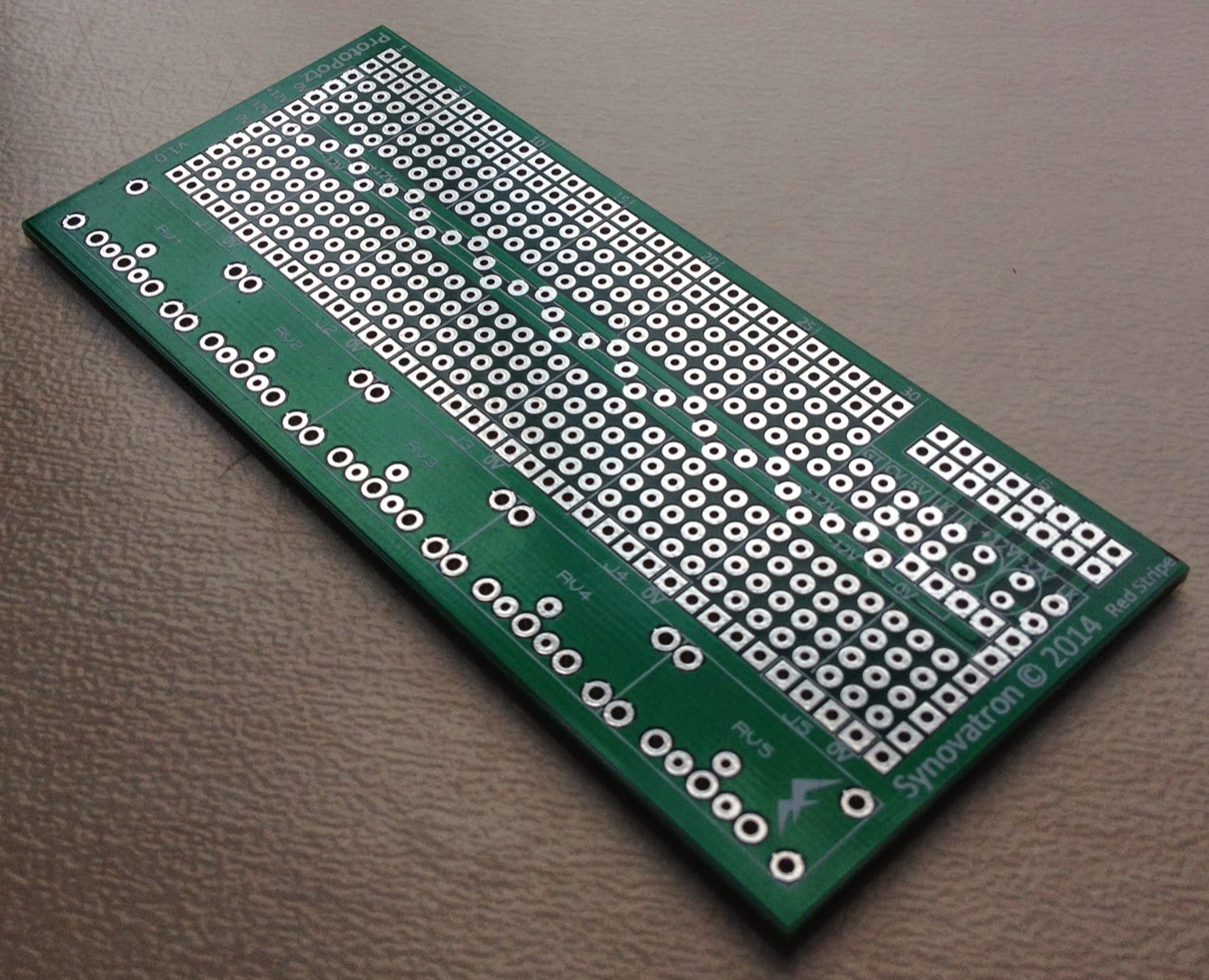The brief was simple (and the same for both clients): 5 channels of 1V/oct to 1.2V/oct CV translation and 5 channels of gate boosting to Buchla levels; the Buchla stepped pulse was not required, just big pulses (10V or more).
This was a great opportunity to use the Synovatron Proto range of prototyping boards which accomodate 5 channels and offer stackability if more circuitry is required than will fit on one board; see below.
 |
| The Proto range of boards |
 |
| CV and Gate modules |
The CV module design used a straightforward precision amplifier with gain of 1.2000 (yes that accurate), 1M Ohm input and 0 Ohm output impedances. The gate module used comparators and output and LED drivers. The outputs each have diodes in series allowing them to be wire-ORed by just connecting outputs together (common to Buchla, wish it was used on Euro).
The CV module electronics fitted nicely on a ProtoJax board with plenty of space as you can see:-
For the gate module I decided to put the input comparators and sockets on the ProtoJax board and output buffers and LEDs on the ProtoXp board and stack them together (it probably could all have been put on one board but it was simpler to make use of the space). The stacked ProtoJax and ProtoXp boards can be seen here:-
The gate board was powered from an MTA connector and the CV board took its power from the gate module (hence the 10-pin ribbon headers for a linking ribbon cable); this was at the client's request as they only had one spare connector (these are very low current modules and daisy chaining them didn't cause any crosstalk issues).
The finished panels looked pretty good; they were made by Schaeffer using Front Panel Designer http://www.schaeffer-ag.de/en/front_panel_designer/the_idea/.
If you are interested in the Proto range of PCBs or in having a custom module built then please contact me at synovatron@btinternet.com
























